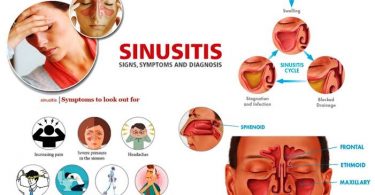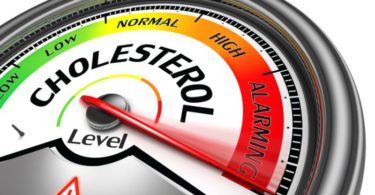ABSTRACT:-
– Rheumatoid Arthritis is a very common joint disorder now a days worldwide.It is a clinical presentation of the joint involvement because of Rheumatoid factor positive in patient.It have a many type of the clinic presentation and criteria of symptoms and sign in patient to patients. It involvement many joints of the body as well as systemic affection also involved in Rheumatoid Arthritis factor positive patients.
KEYWORDS:-
– Rheumatoid Arthritis, Rheumatoid Arthritis factor, Joints,Remedy, Homoeopathy.
INTRODUCTION:-
-Rheumatoid Arthritis is a multi system inflammatory disease primarily affecting the synovium and adjacent tissues. Rheumatoid Arthritis is a common disease having peak incident in 3rd to 4th decade of life, more higher in female.The onset of disease is insidious, beginning with prodromal of fatigue, weakness, joint stiffness,vague Arthralgia and myalgias followed by pain and swelling of joints usually in Symmetrical pattern especially involving joints of hands, wrist and feet.
ETIOLOGY (MULTIFACTORIAL):-
1. Immunological Factors:-
-The combination of conserved amino acid sequence in the third hypervariable region of HLA-DRB1 with positive rheumatoid factor indentifies individuals at 13 times greater risk of developing bony erosion at 1 year,
-This factor is important in determining the development and expression of of the disease.(1,2)
2. Hormonal factor:- In women incidence of RA is greater before menopause and remission of RA during pregnancy.(1,2)
3. Oral contraceptive pill:- Oral contraceptive pill may postpone onset of the disease.(1,2)
4. Low economic status:- It is associated with a Worse outcome in RA.(1,2)
PATHOGENESIS:
TYPES OF PRESENTATION:-
1. Classic:- Symptoms fluctuate in severity From day to day. pain, stiffness and swelling of small joints of hands and wrists.
2. Palindromic:- Intermittent episodes of pain, swelling and redness, usually of a single joint, followed by rapid return to normal after several days.
3. Systemic:- Pericarditis, weight loss and pleurisy but minimal joint involvement.
4. Polymyalgic:- Pain and stiffness in hips and shoulder joint with subsequent synovitis.
5. Monoarthritic:- Single joint involvement commonly the knee joint.
6. Acute onset:- Sudden overnight onset with stiffness and pain.
7. With generalized lymphadenopathy.
CLASSIFICATION OF RHEUMATOID ARTHRITIS
(American collage of Rheumatology criteria)
CRITERIA DEFINATIONS
Morning stiffness Morning stiffness in and around the joint lasting at least 1 hour before maximal improvement.
Arthritis of three or more joint areas Soft tissue swelling or fluid (not bony growth alone)observed by a physician in at least three joint areas simulta-neously: the 14 possible joint areas ( right or left) are :Proximal interphalangeal, Wrist, Elbow, Knee, Ankle,
Metacarpophalangeal
Arthritis of hand joints At least one of wrist,
Metacarpophalangeal joint or proximal interphalangeal joint swollen as above
Symmetrical arthritis Simultaneous involvement of the joint areas above on both sides of the body (bilateral involvement of proximal interphalangeal, metacarpophalangeal or metacarpophalangeal or metatarsophalangeal joints is acceptable without absolute symmetry)
Rheumatoid nodules Subcutaneous nodules over bony prominences or extensor surfaces or in juxta-articular regions, observed by a physician.
Serum rheumatoid factor Demonstration of abnormal amount of serum rheumatoid factor by any method that has been positive in < 5% of normal control subjects.
Radiographic changes Radiographic changes typical of rheumatoid arthritis on postero-anterior hand and Wrist radiographs; Changes must include erosions or unequivocal bony decalcification localized or most marked adjacent to the involved joints( osteoarthritis changes alone do not qualify)
-Atleast four of the above seven criteria must be present in Rheumatoid Arthritis patient. The first 3 criteria must be present for altesast 6 weeks.
DIAGNOSIS:-
1. Clinical criteria for RA have been present for altesast 6 weeks.The joints feel hot,swollen and tender to touch, generalized lymphadenopathy may also be present.
2. Laboratory investigation:-
-WBC Count increased, Rheumatoid factor positive, ESR High, Antinuclear test positive, Thrombocytosis, Mild normocytic anaemia.
-Arthrocentesis of synovial fluid:- Straw coloured with increased neutrophils.
3.Radiology:- Sequence of change are- Periarticular osteopenia with soft tissue swelling, loss of joint space, erosions at joint margins, deformity such as subluxation or complete dislocation of affected joints.
4.Synovial biopsy:- Villus formation with thickening of synovial layer and infiltration with abnormal cells.(Rheumatoid pattern).
Differential diagnosis:-
1. Infectious arthritis:- Presenting with pain and tenderness caused by virus(rubella, rhinovirus type-7, Echovirus, E-B Virus, hepatitis C), Bacterial (Mycoplasma, Lyme disease).(1,2)
2. Crystal arthropathies :- Gout and calcium pyrophosphate dihydrate deposition disease.(1,2)
3. B27-associated arthropathies, usually present as oligoarthropathy.(psoriatic, reactive and enterohepatic)(1,2)
Joint involvement in RA:-
– Metacarpophalangeal , proximal interphalangeal joints, wrist joint and knee joint are commonly involved.
-Joints are warm, swollen and tender in early stages. Weakening of the joint capsule and tendon along with ligament damage lead to joint instability, subluxation or dislocation and produces characteristics deformities of RA. Sometimes sever joint damage may lead to fibrous or bony ankylosis or secondary degerative changes.
1. Hands and wrists joint:-
– Inability to oppose the palms(Tenosynovitis). Swelling of Metacarpophalangeal joints and dorsum of wrist and ‘Spindling’ of proximal interphalangeal joints.
-Rupture of flexor/extensor tendons with weakness of grip or triggering of fingers, Ulnar deviation, Swan nack deformity, Bouttoniere deformity, Mallet finger deformity, Z deformity of thumb, Piano-key sign(Hypermobility of a dorsally subluxated ulnar styloid and laxity of radioulnar joint.)(1,2)
2. Elbow and shoulder joint:-
-Elbow involved leading to early loss of extension, Shoulder involvement occur in long-standing RA. superior subluxation and rotator cuff tears occur.(1,2)
3. Knee joint:-
-Synovial effusion occurs early followed by fixed flexion, or valgus deformities, Synovial rupture may lead to release of fluid into popliteal space and calf. Effusion may distend popliteal bursa to produce a ‘Baker’s cyst’.(1,2)
4. Ankle and subtalar joints:- Vulgus deformity.
5. Midfoot:- Pes planus.
6. Toes:- Valgus, cock-up.(1,2)
General management of Rheumatoid Arthritis:-
1.Education:- Provide information and it’s therapies to patients for caring and controlling their own disease.(1,2)
2. Exercise, physiotherapy:- Physiotherapy such as electrictherapy and exercise program to improve and maintain muscle bulk around the joints.(1,2)
3. Dietary advice includes weigh reduction and addition of fish oil or evening primrose oil.(1,2)
Homoeopathic management of Rheumatoid Arthritis:-
1) Calcarea Fluorica:-
-A useful remedy for malnutrition of bones. Chronic synovitis of knee joint. Rhwumatic enlargement of the joints of the fingers.exostoses on fingers.swelling and induration around tendons and joints.Recurrent fibroid in the hollow of the knee.rice bodies in joints.hip joint disease.Rachitic enlargement of femur in infants.bursitis.cold wrists and ankles.Aggravated by beginning of motion,cold,wet, draft, changing weather and sprain. Amelioration by continued motion,warm application and rubbing.
2) Arnica Montana:-
-This remedy helpful in Rhwumatic Arthritis.knee joints suddenly bend when standing.feet numb.Limbs ache as if beaten with feeling of bruised soreness.pain in arms better by hanging down.want of strength in the hands on grasping.aggravated by injuries,jarring,over exertion and lying on left side. Amelioration by lying down and lying with head low or out stretched.cramps in the fingers i.e. writer’s cramp.t is a traumatic remedy of both mental and physical.tendancy to haemorrhage is a indication for this remedy.This remedy also useful in autoimmune disease.(3,4,5)
3) Ledum palustre:-
-Pain and inflammation often being in the toes spread up through the ankle and knees. Arthritis start in lower joints and extend to higher. It is adpted to mostly rheumatic and gouty diathesis.Cramp over hip joints,swollen,blotchy,ecchymotic legs and feet.heels sore and soles painful.trambling of hands when moving or grasping.esaily spraining of ankles.pain in shoulder on raising arm. Better by cold, bathing and reposing and worse by warmth,covers,motion and night. Ball of great toe swollen,painful.black and blue places become green.parts cold to touch but not cold subjectively to patient.emaciation of affected parts. The Joints may make crackling sounds and swollen. Pain and swelling relieved by cold application.(3,4,5)
4) Belladonna:-
-Joints are swollen,red, shining and red steaks radiating. Rapid and violent onset of throbbing arthritic pain. Sensation of heat.Cold extremities.involuntary limping.trembiling of limbs,weakness and tottering gait.lies or sit with feet crossed.Jerks or spasms in limb is character of this remedy.Quick sensation and motion,pain comes suddenly,last indefinitely and cease suddenly.Patient have delirium and menia. Persons who are lively and entertaining when well,but violent and often delirious when sick.(3,4,5)
5) Berberis Vulgaris:-
-Old Rheumatic constitution.Rapid changes of symptoms is main character of this remedy.wandaring and radiating type of pains and general feeling of malaise.pain in balls of feet on stepping.Neuralgia under fingernails,with swelling of finger joints.outerside of thighs cold, ulcerative pains in heels.pain in balls of feet on stepping.intense weariness and lameness of legs after walking a short distance.stitches between metatarsal bonesa as from a nail.aggravation from standing, twilight,motion, jarring and urinating.(3,4,5)
6) Lycopodium
-Upper part of body emaciated and lower part semi dropsical.This remedy adapted to intellectually keen but physically weak. Fingers twitch during sleep.sticky sweat on fingers.pains jerks legs upward. Pain in calves when walking and at night. One foot hot and other cold sweaty feet.Hands and feets numb with cramps.Heels numb. Oedema of feet.Cramp in toes at night. Pain in heels as if treading on pebbles. Can not lie on painful side.Toes bend when walking.Toes and fingers contracted.Curvature and caries of bones.Better by warm drink,motion and urinating. Worse by pressure of clothes and 4pm to 8pm.(3,4,5)
7) Colchicum Autumnale:
-Artheritic pain in joints;pain are tearing,digging, drawing;Pain aggravated by mental exertion, evening ,at night and emotions, slightest touch and vibration;patient screams with pain on touching a joint or stubbing a toe.it causes extreme relaxation of muscles.tlThe parts are red,hot, swollen, tearing pains;many joint affected at a same time.oedematous swelling and coldness of feet and legs.Buttocks hot.Adopted to rehumatic , gouty diathesis;person of robust vigorous constitution; disease of old people.It affects markedly muscles,fibrous tissue, serous membranes,joints,esp.small joints.
CONCLUSION:-
–Rheumatoid Arthritis is a very common disease condition in population and homoeopathic treatment are effective in the treatment of Rheumatoid arthritis. Disappearance of the signs and symptoms within a short span of time along with the help of proper homeopathic remedy and it’s management indicates the positive effect of Homeopathy in the treatment of Rheumatoid arthritis.
REFERENCE:-
1) Aspi F Golwalla & Sharukh A Golwalla, Golwalla’s medicine for students, 23rd edition, The National Book Depot, 2011, Page.No.888-893
2) Harsh mohan,Text book of pathology,6th edition, Jaypee brothers medical publishers (P) LTD,2010,Page.No. 851-852.
3) William boericke,Pocket manual of homoeopathic material medica and repertory,9th edition,San Francisco,B.Jain Publishers Pvt.Ltd.,1927,Page.No.149-151,76-79,397-399,110-115,119-121,409-413,224-225.
4) Dr.S.R.Phatak, Materia medica of homeopathic medicines, 2nd edition revised and enlarged B.Jain publishers Pvt.Ltd, 1999, Page.No.157-159,78-82,424-426,113-118,122-125,435-441,246-249.
5) H.C.Allen, Keynotes and characteristics with comparison’s and bowel nosodes,2nd edition,Mayur jain Indian books and periodicals publishers,2007,Page.No.34-36,146-147,46-48,49-50,150-153,89-90.





